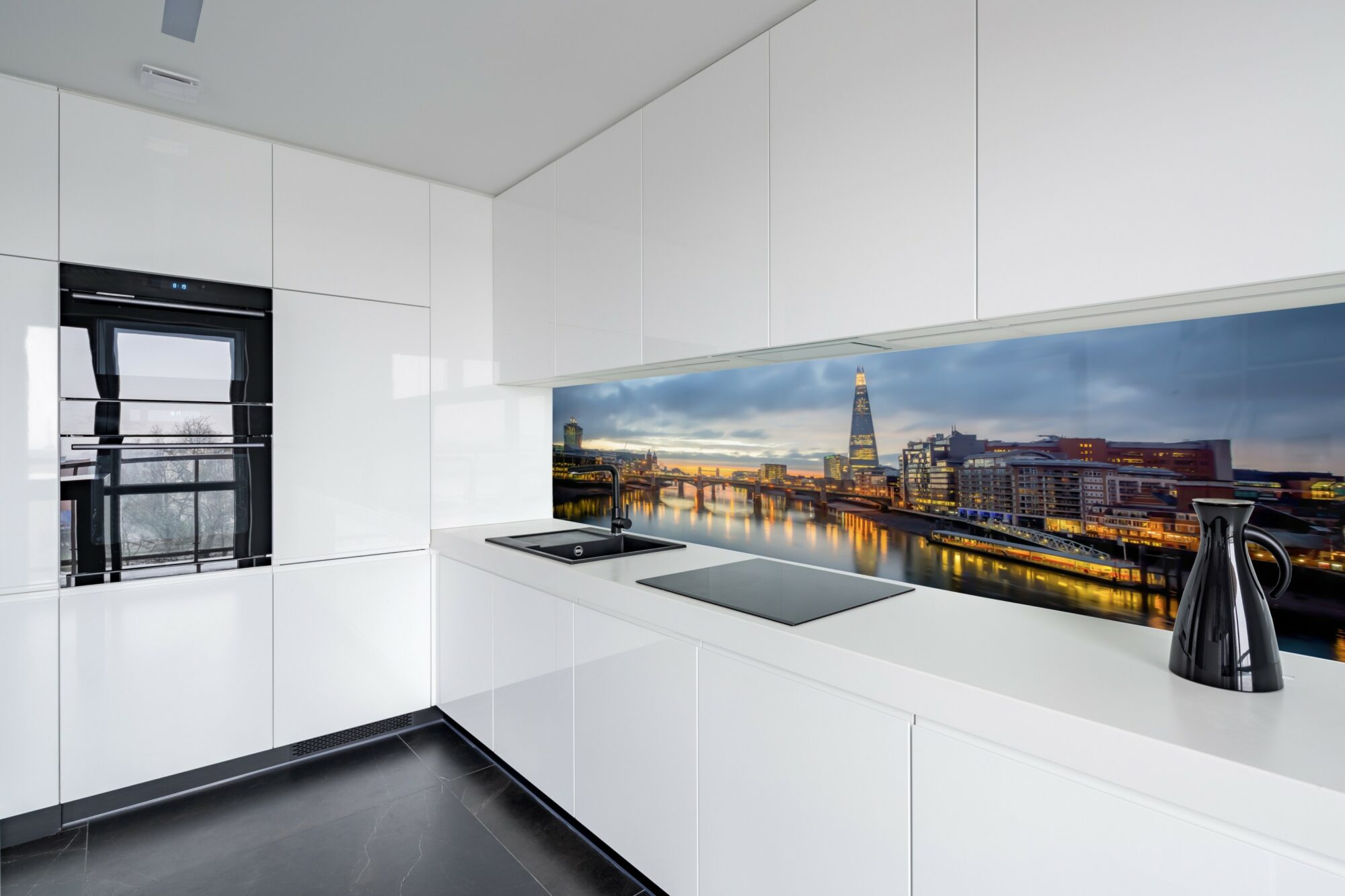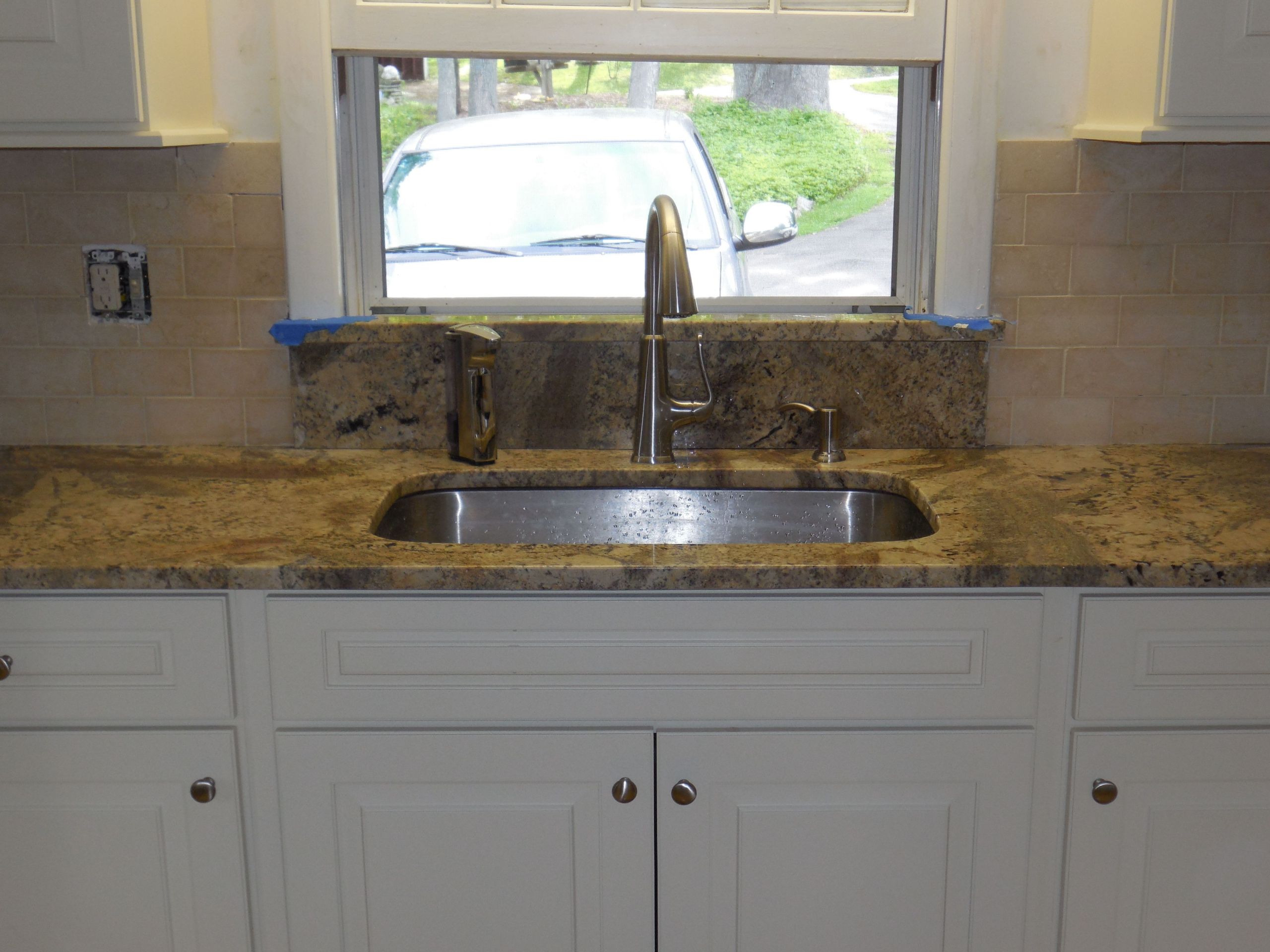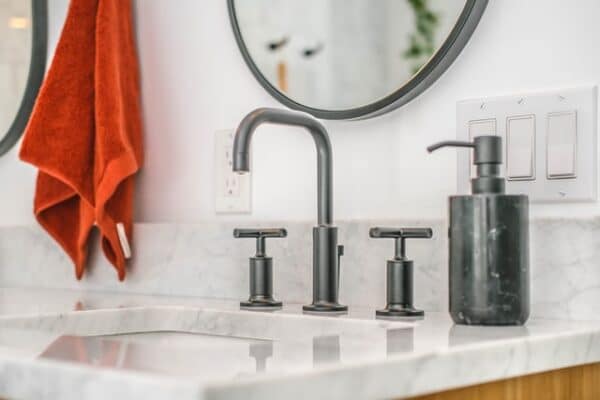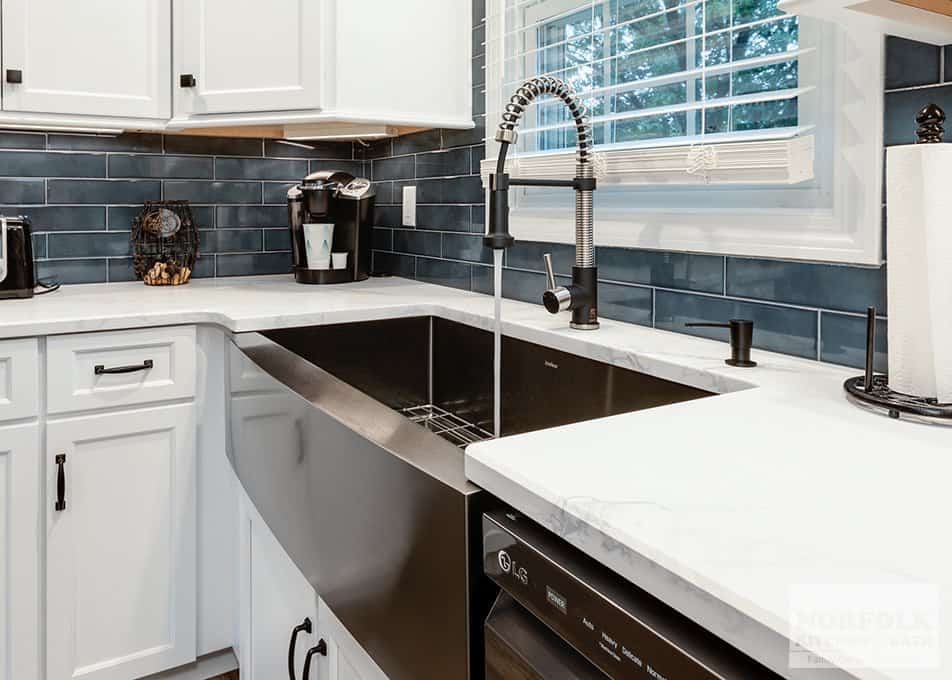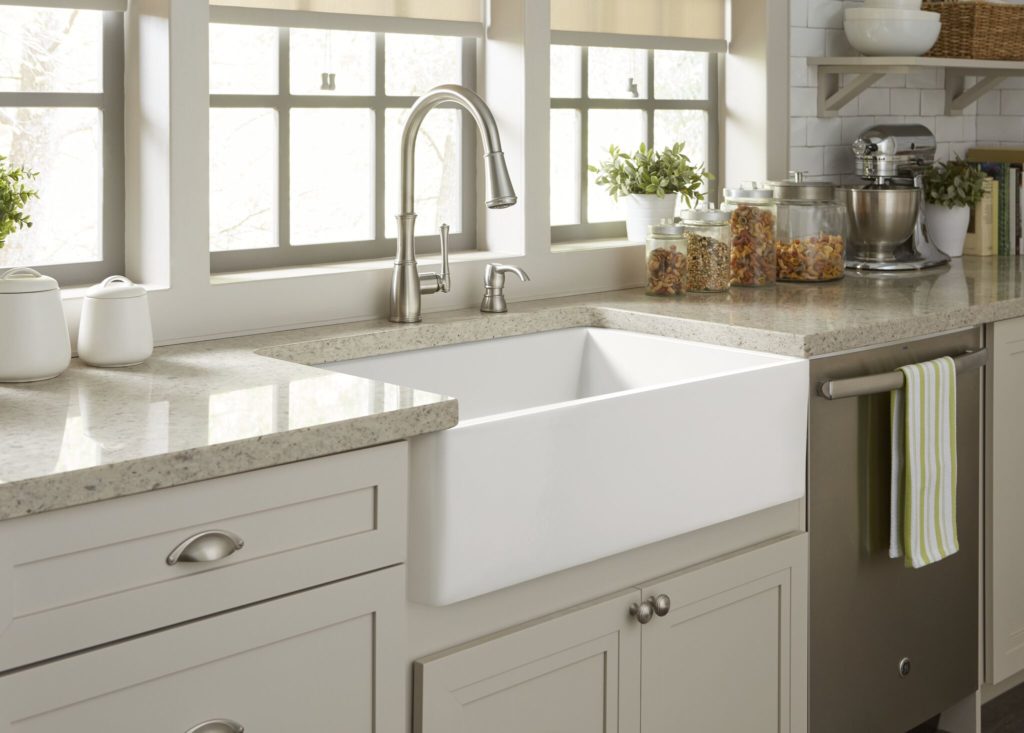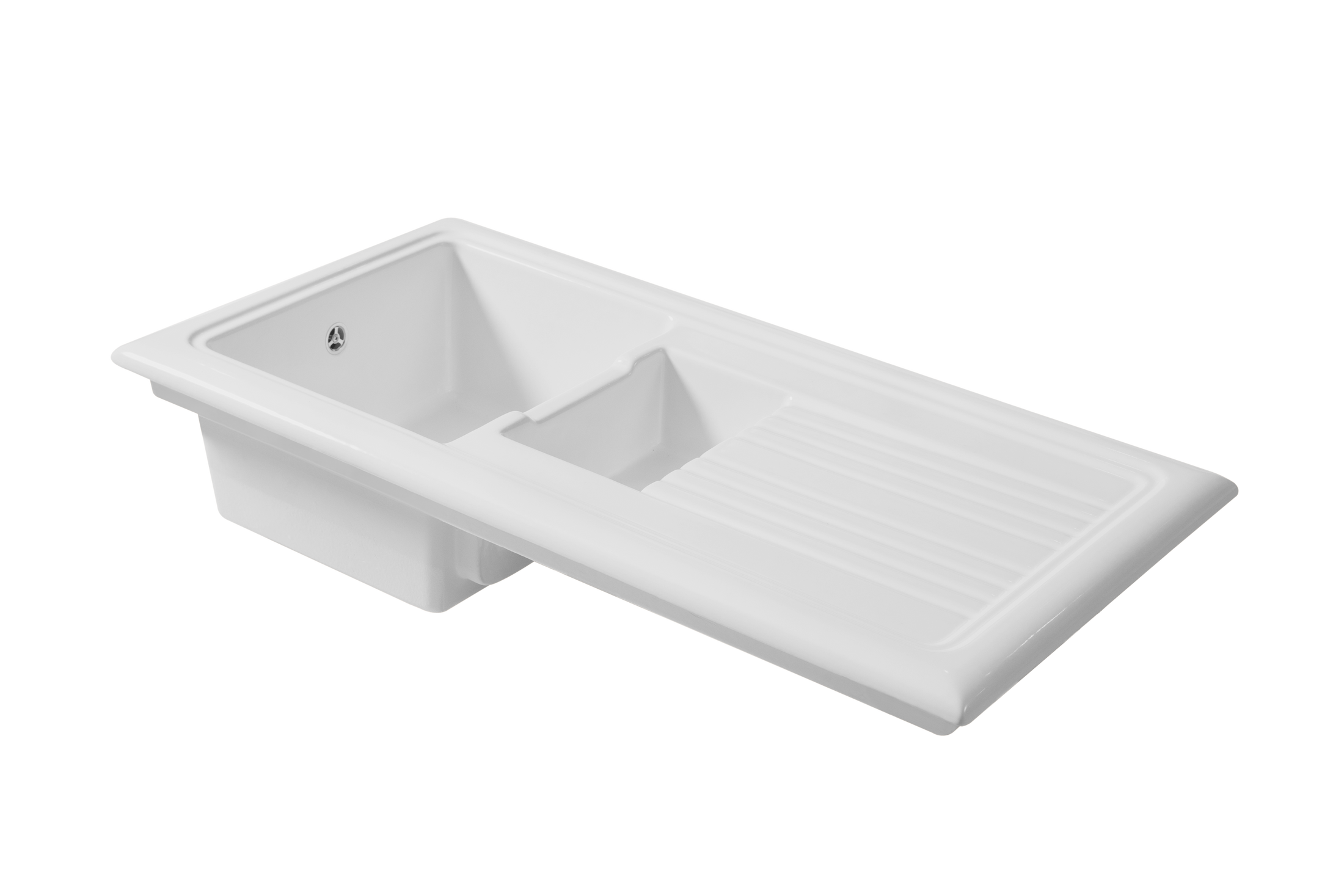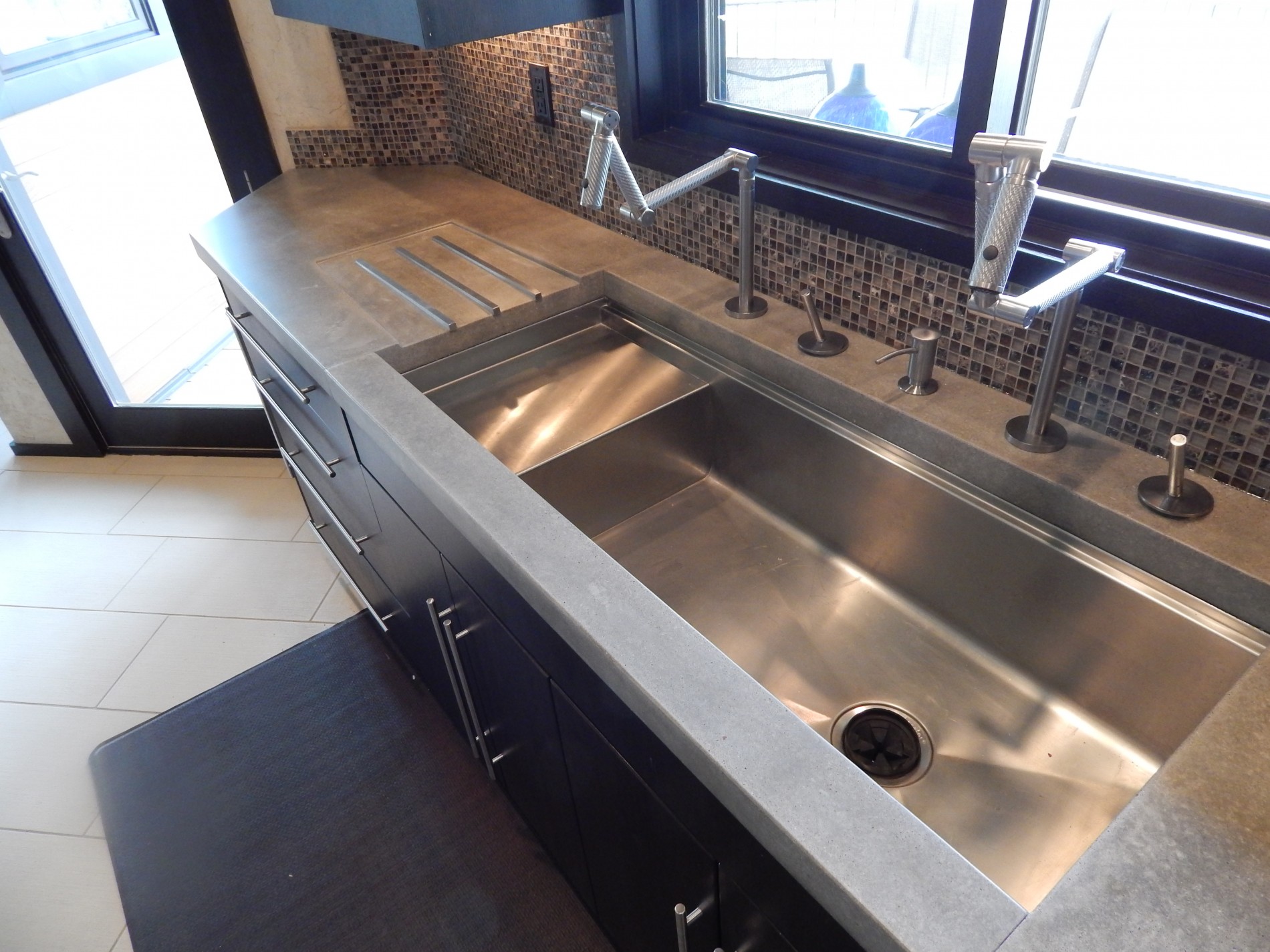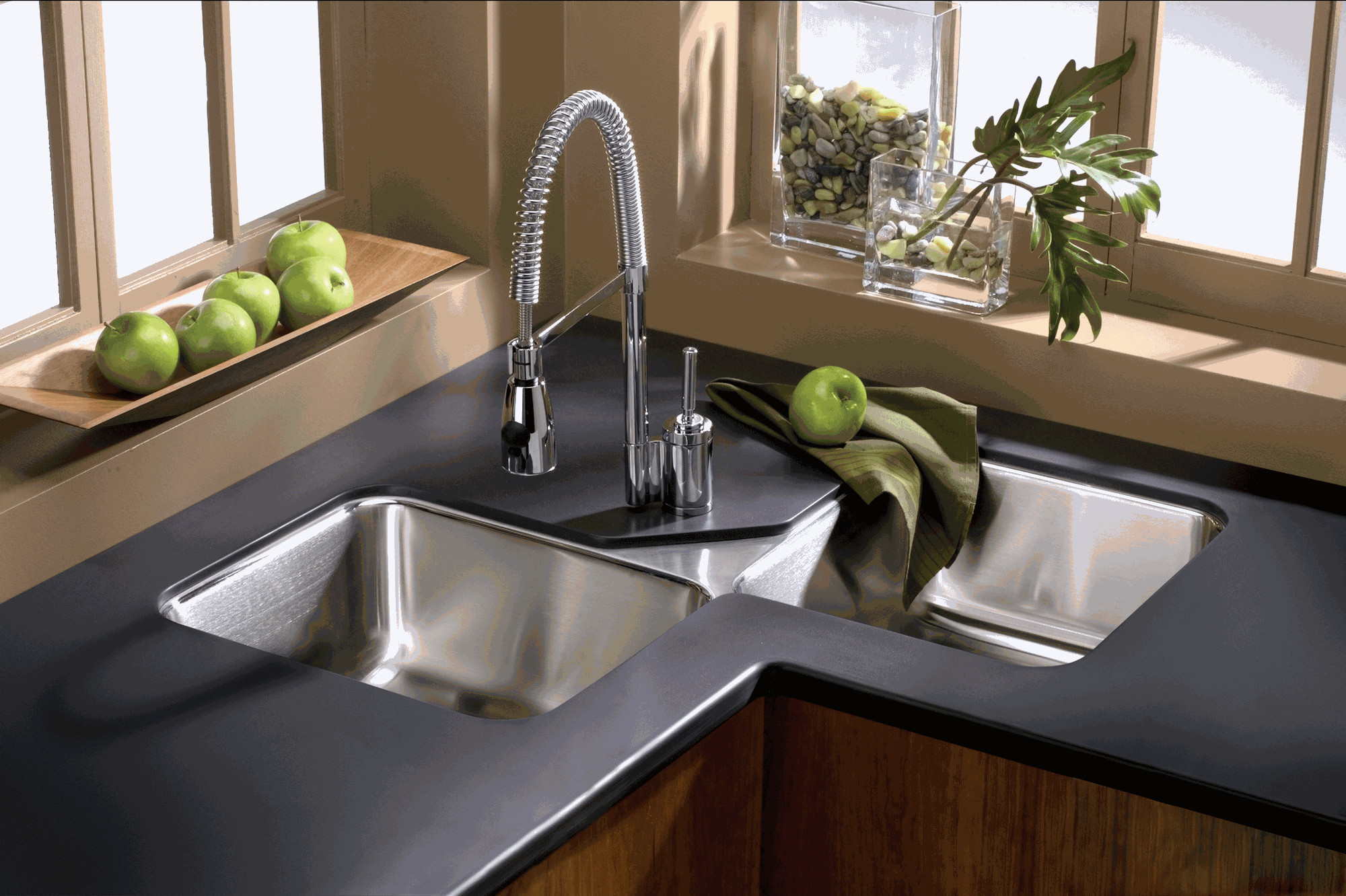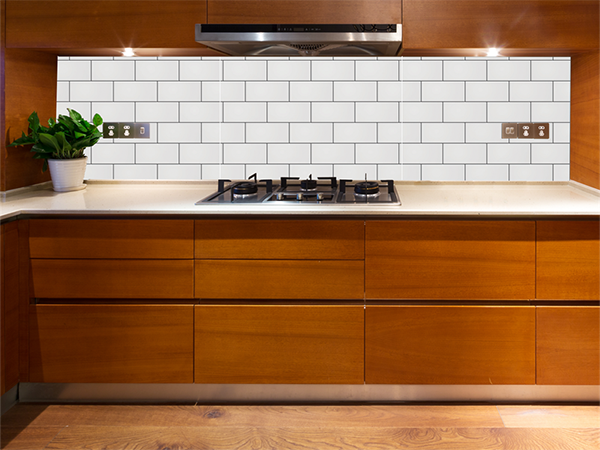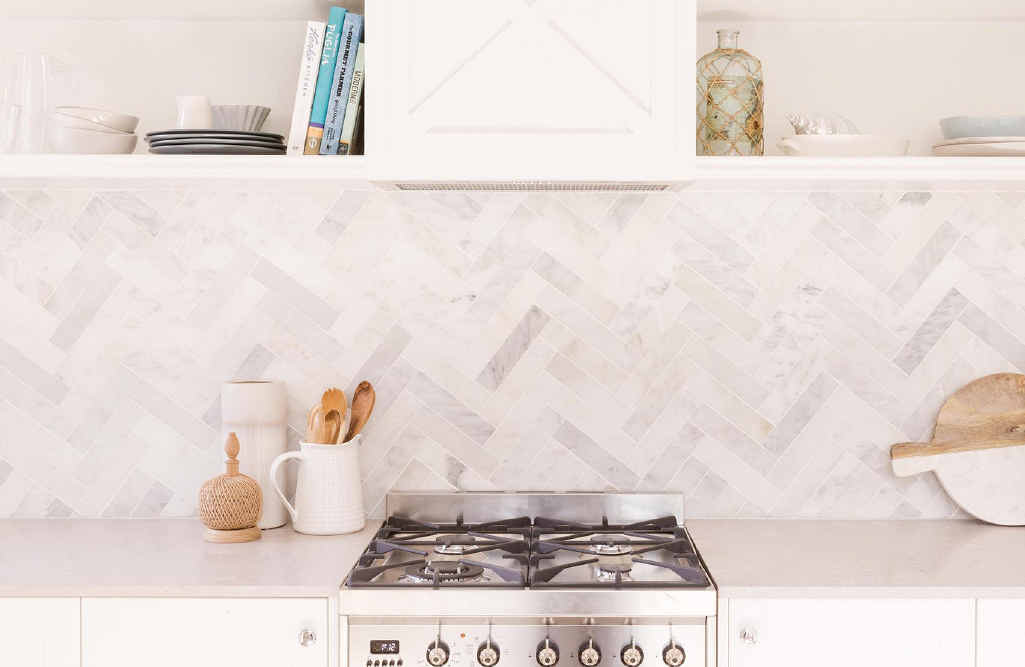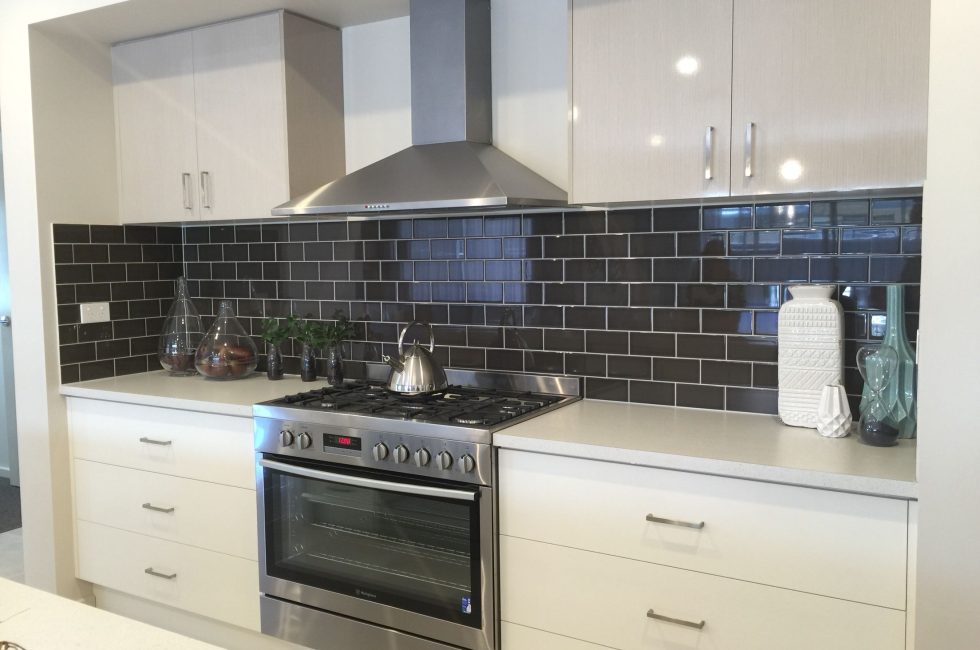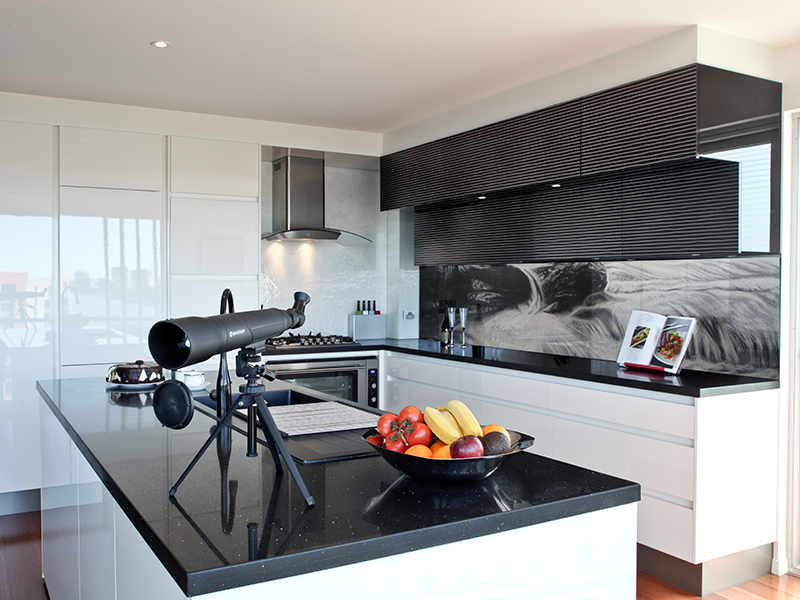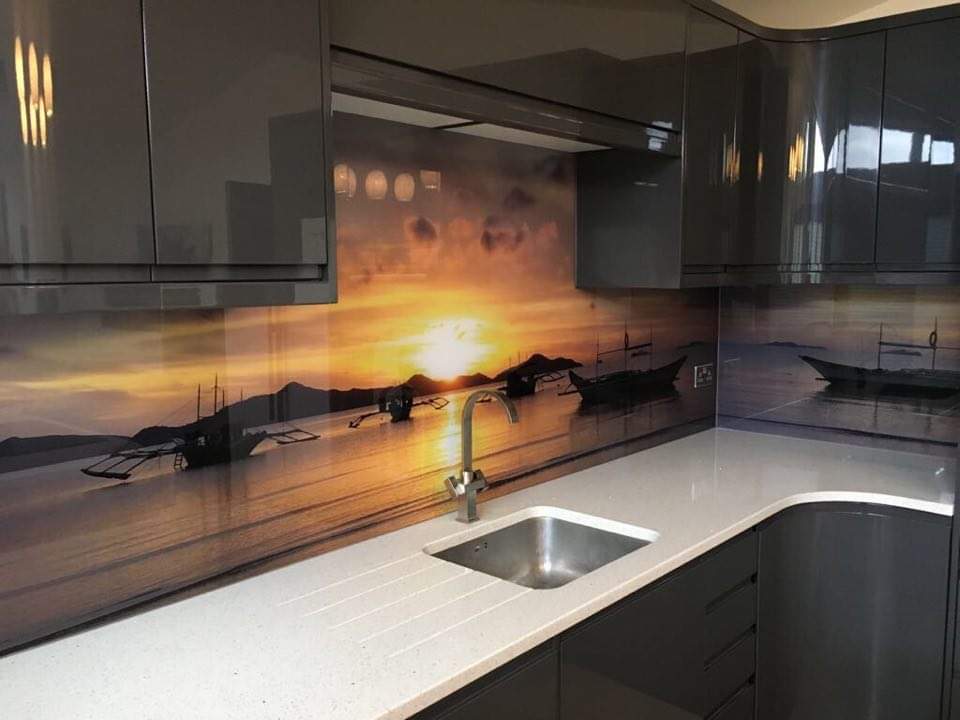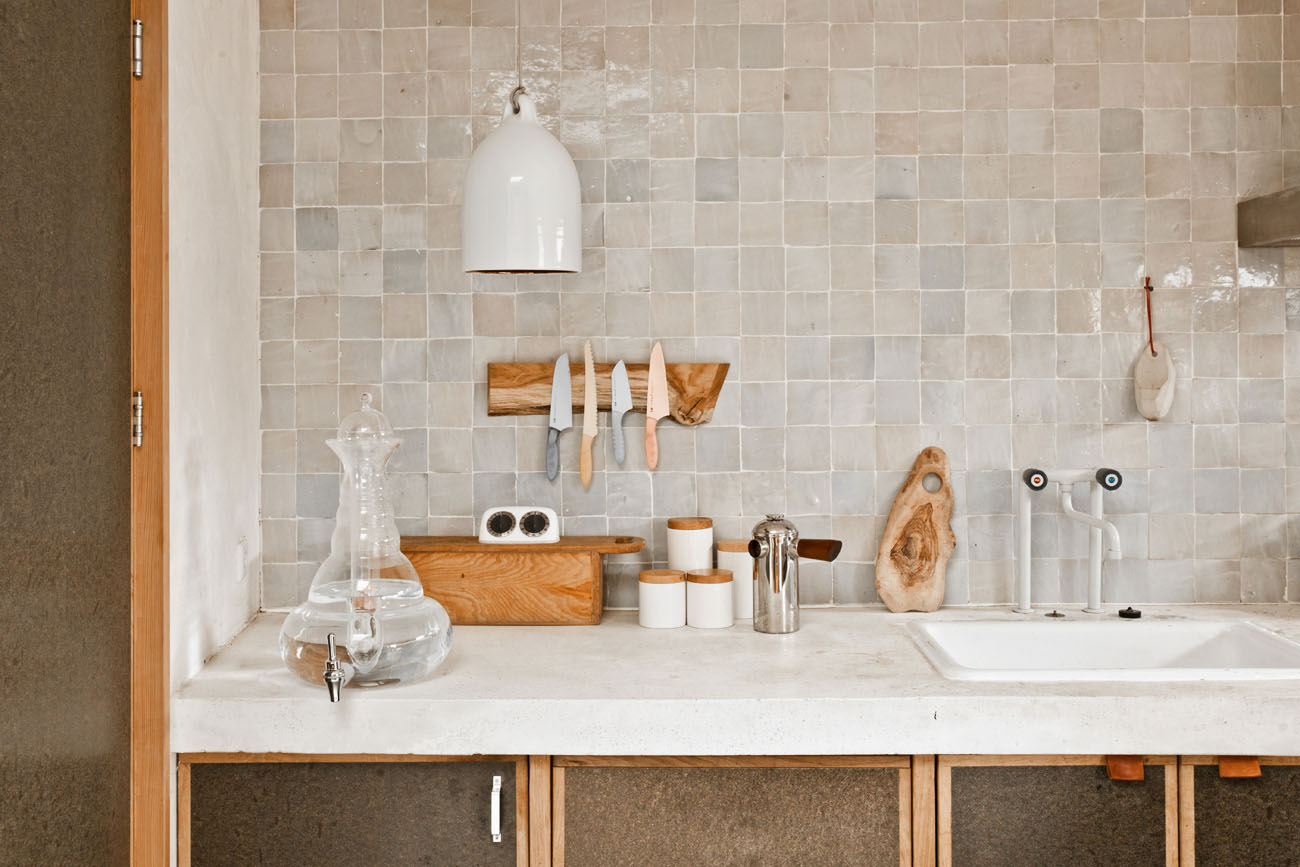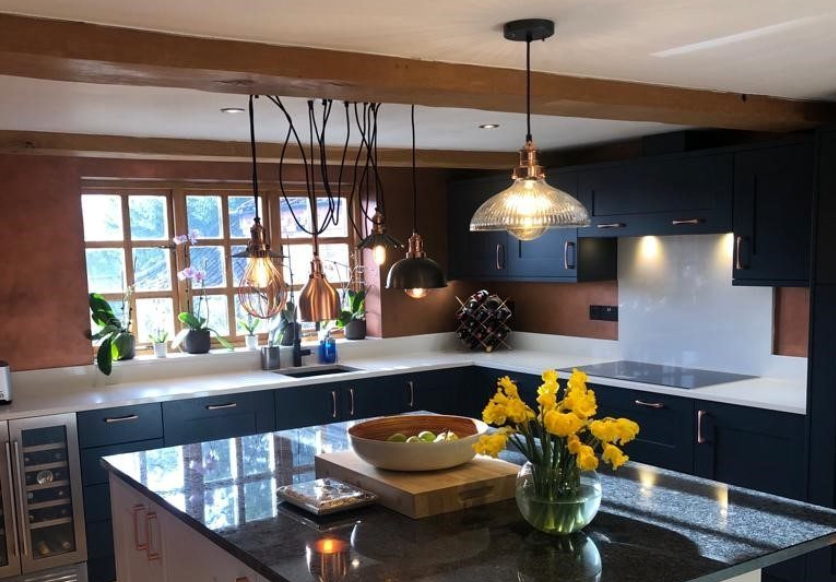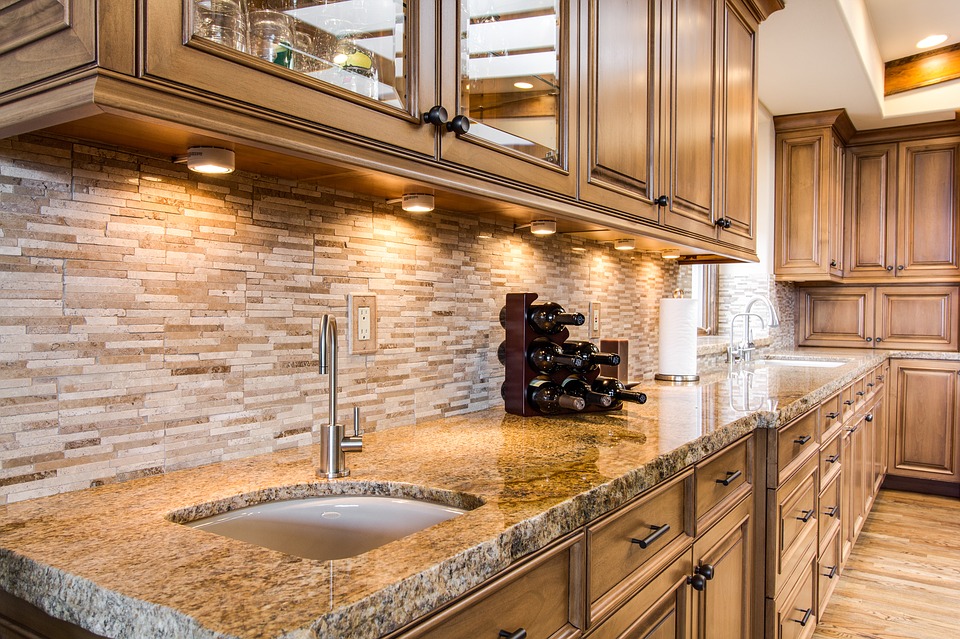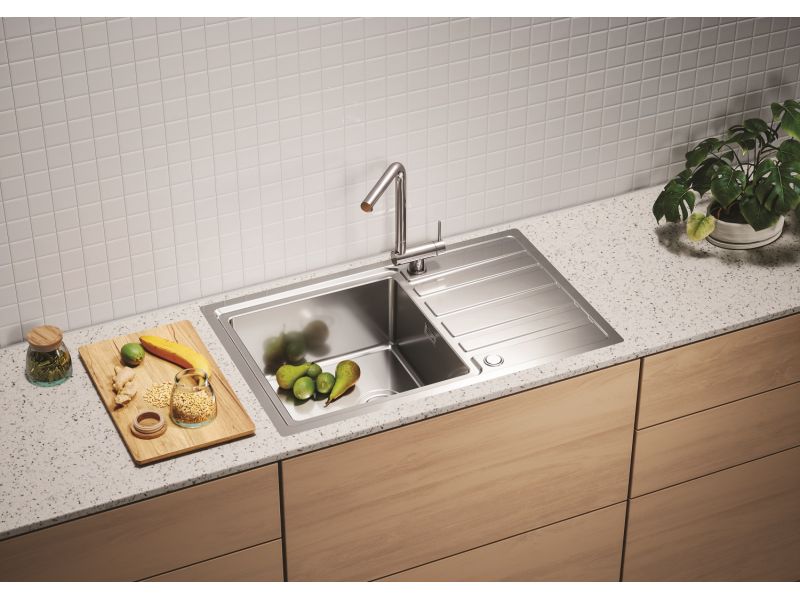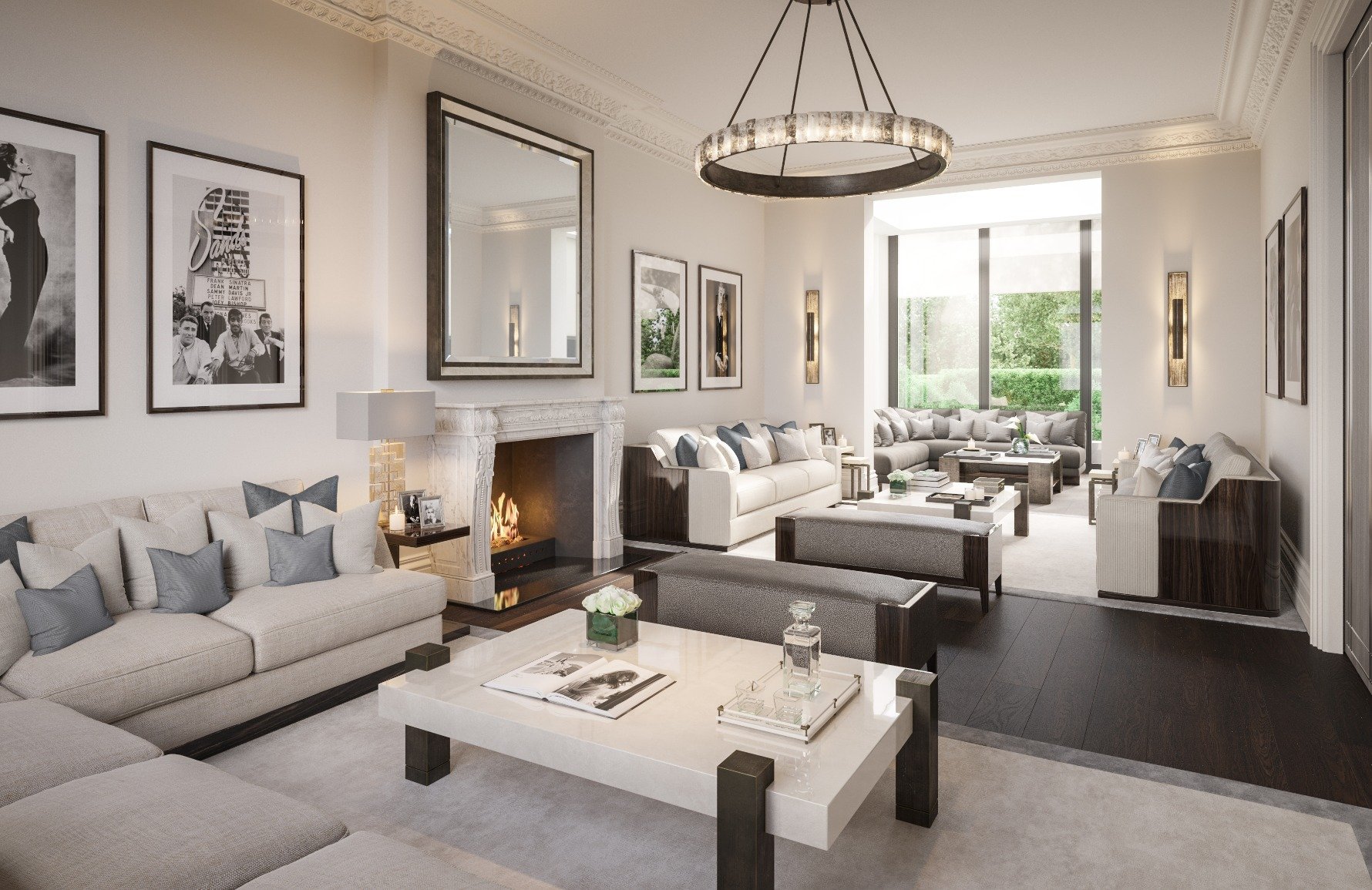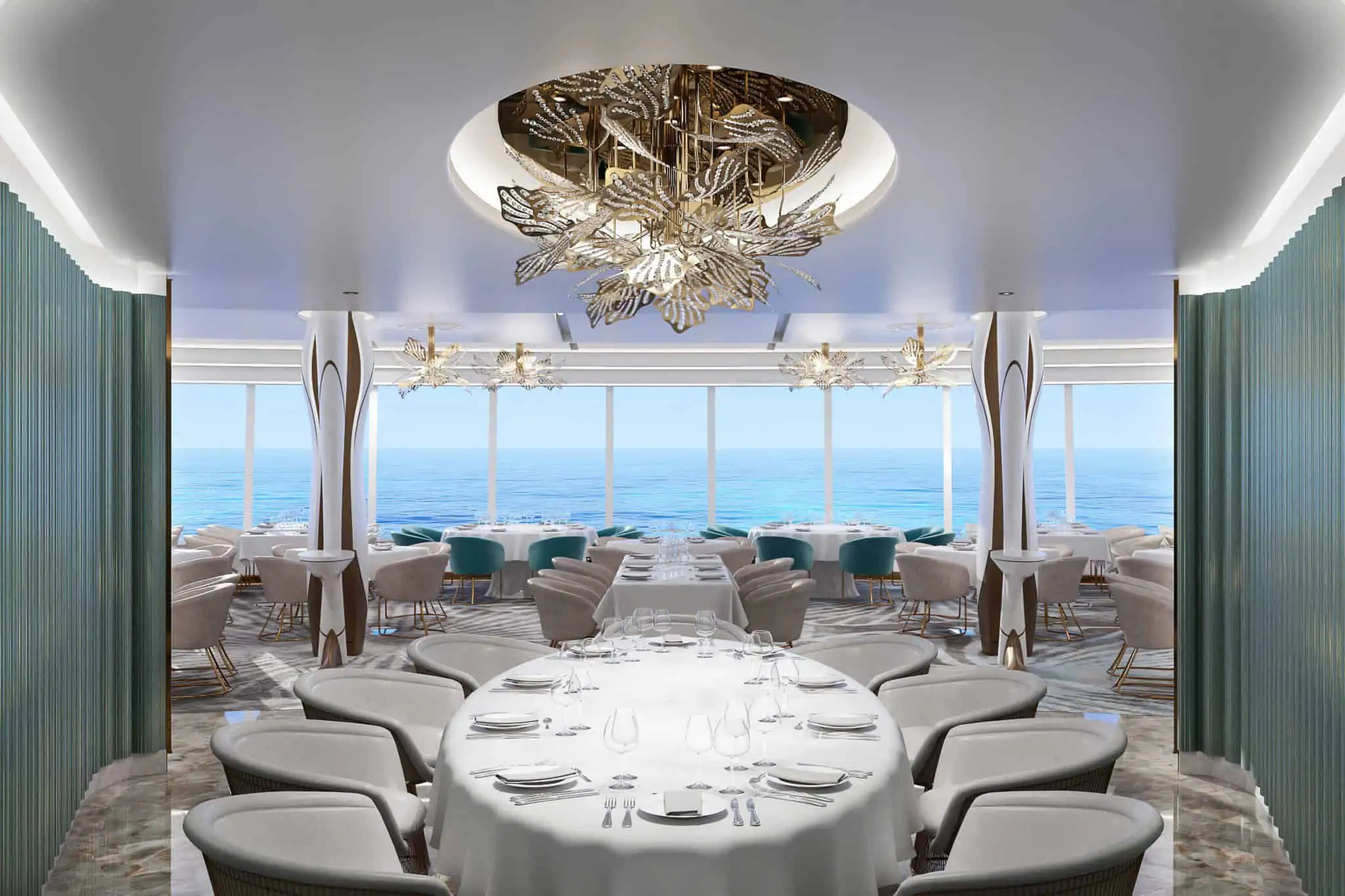1. Splashback behind kitchen sink
If you're in the process of designing or renovating your kitchen, you may be wondering if you need a splashback behind your kitchen sink. This small addition can make a big impact on both the functionality and aesthetics of your kitchen. In this article, we'll explore the reasons why a splashback is important and discuss some of the options available for your kitchen sink area.
2. Kitchen sink splashback ideas
When it comes to splashbacks, there are endless possibilities for design and materials. Some popular options for kitchen sink splashbacks include tiles, glass, stainless steel, and even wallpaper. It's important to choose a material that is both durable and easy to clean, as the area behind your sink can often get dirty and wet.
If you want to add a pop of color or pattern to your kitchen, consider using mosaic tiles or a bold wallpaper for your splashback. For a more modern and sleek look, opt for a stainless steel or glass splashback. Whichever material you choose, make sure it complements the overall design of your kitchen.
3. Splashback behind sink
So why exactly do you need a splashback behind your sink? The main purpose of a splashback is to protect your walls from water damage. When you're washing dishes or cooking, water can easily splash onto the wall behind your sink. Over time, this can cause damage to the paint or wallpaper, leading to peeling or discoloration.
A splashback acts as a barrier between your sink and the wall, preventing any water from seeping in. This not only protects your walls but also makes cleaning up spills and splashes much easier.
4. Do I need a splashback behind my kitchen sink?
The short answer is, yes, you do need a splashback behind your kitchen sink. Not only does it serve a practical purpose in protecting your walls, but it can also enhance the overall look of your kitchen. However, the specifics of your splashback will depend on your personal preferences and the design of your kitchen.
If you have a small kitchen with limited counter space, you may want to consider extending your splashback behind your stove as well. This will create a cohesive look and provide additional protection for your walls.
5. Kitchen sink splashback height
When it comes to the height of your splashback, it's important to consider the size of your sink and the height of your faucet. The splashback should extend at least 150mm (6 inches) above the sink and faucet to ensure adequate protection. However, you can extend it higher if you prefer a more dramatic look.
Additionally, if you have a window above your sink, you may want to consider extending the splashback to the bottom of the window to create a seamless and cohesive look.
6. Kitchen sink splashback tiles
Tiles are a popular choice for kitchen sink splashbacks due to their durability and versatility. There are countless options when it comes to tile design, from simple and classic subway tiles to intricate mosaic patterns. You can also choose from a variety of materials such as ceramic, porcelain, glass, or natural stone.
When selecting tiles for your splashback, consider the overall design of your kitchen and choose a color and pattern that complements it. You can also mix and match different tiles to create a unique and personalized look.
7. Kitchen sink splashback regulations
Before installing a splashback behind your kitchen sink, it's important to check your local building codes and regulations. These may dictate the type of material you can use, the height and size of the splashback, and any other requirements. It's always better to be safe than sorry, so make sure to do your research beforehand.
8. Kitchen sink splashback materials
As mentioned earlier, there are many different materials you can choose from for your kitchen sink splashback. In addition to tiles, glass, and stainless steel, you can also consider options such as laminate, acrylic, or even stone veneer. Each material has its own unique benefits and drawbacks, so be sure to do your research and choose one that fits your needs and budget.
9. Kitchen sink splashback alternatives
If you're not a fan of traditional splashbacks, there are other alternatives you can consider for your kitchen sink area. One option is to use a waterproof paint or wallpaper for the wall behind your sink. This can add a pop of color or pattern without the need for additional materials. Another option is to install a shelf or ledge above your sink to catch any water splashes.
However, keep in mind that these alternatives may not provide the same level of protection as a traditional splashback, so use them with caution.
10. Kitchen sink splashback installation
Once you've chosen your desired material and design for your kitchen sink splashback, it's time to install it. If you're not confident in your DIY skills, it's best to hire a professional to ensure proper installation and avoid any potential damage to your walls.
However, if you're up for the challenge, make sure to measure and prepare the wall properly before installing the splashback. Follow the manufacturer's instructions carefully and take your time to ensure a seamless and sturdy installation.
In conclusion, a splashback behind your kitchen sink is not only a practical addition but also a stylish one. With the various options available, you can easily find one that fits your personal style and adds a touch of personality to your kitchen. So don't overlook this small but important detail when designing or renovating your kitchen.
Why a Splashback is Essential for Your Kitchen Sink

Aesthetic Appeal
 When designing a kitchen, the aesthetic appeal is often a top priority. After all, the kitchen is the heart of the home and a space where families spend a lot of time.
Splashbacks
are a great way to add a touch of style and personality to your kitchen. With a wide range of materials, colors, and patterns to choose from, you can easily find a
splashback
that complements your kitchen design and ties the whole space together. Plus, a
splashback
behind your kitchen sink can act as a focal point and add visual interest to an otherwise plain wall.
When designing a kitchen, the aesthetic appeal is often a top priority. After all, the kitchen is the heart of the home and a space where families spend a lot of time.
Splashbacks
are a great way to add a touch of style and personality to your kitchen. With a wide range of materials, colors, and patterns to choose from, you can easily find a
splashback
that complements your kitchen design and ties the whole space together. Plus, a
splashback
behind your kitchen sink can act as a focal point and add visual interest to an otherwise plain wall.
Protect Your Walls
 Aside from their aesthetic value,
splashbacks
are also highly practical. When cooking and washing dishes, water, soap, and food particles can easily splash onto your walls, causing stains and damage over time. With a
splashback
in place, these splashes are easily wiped away, keeping your walls clean and free from damage. This is especially important in areas around the sink, where moisture and food residue are more likely to accumulate.
Aside from their aesthetic value,
splashbacks
are also highly practical. When cooking and washing dishes, water, soap, and food particles can easily splash onto your walls, causing stains and damage over time. With a
splashback
in place, these splashes are easily wiped away, keeping your walls clean and free from damage. This is especially important in areas around the sink, where moisture and food residue are more likely to accumulate.
Easy Maintenance
 One of the biggest advantages of having a
splashback
behind your kitchen sink is the ease of maintenance. Unlike painted walls, which require frequent cleaning and touch-ups,
splashbacks
are designed to be durable and easy to clean. Most materials can be wiped down with a damp cloth and mild detergent, making it a quick and hassle-free task. This is particularly beneficial in a busy kitchen where spills and splatters are a common occurrence.
One of the biggest advantages of having a
splashback
behind your kitchen sink is the ease of maintenance. Unlike painted walls, which require frequent cleaning and touch-ups,
splashbacks
are designed to be durable and easy to clean. Most materials can be wiped down with a damp cloth and mild detergent, making it a quick and hassle-free task. This is particularly beneficial in a busy kitchen where spills and splatters are a common occurrence.
Customizable Options
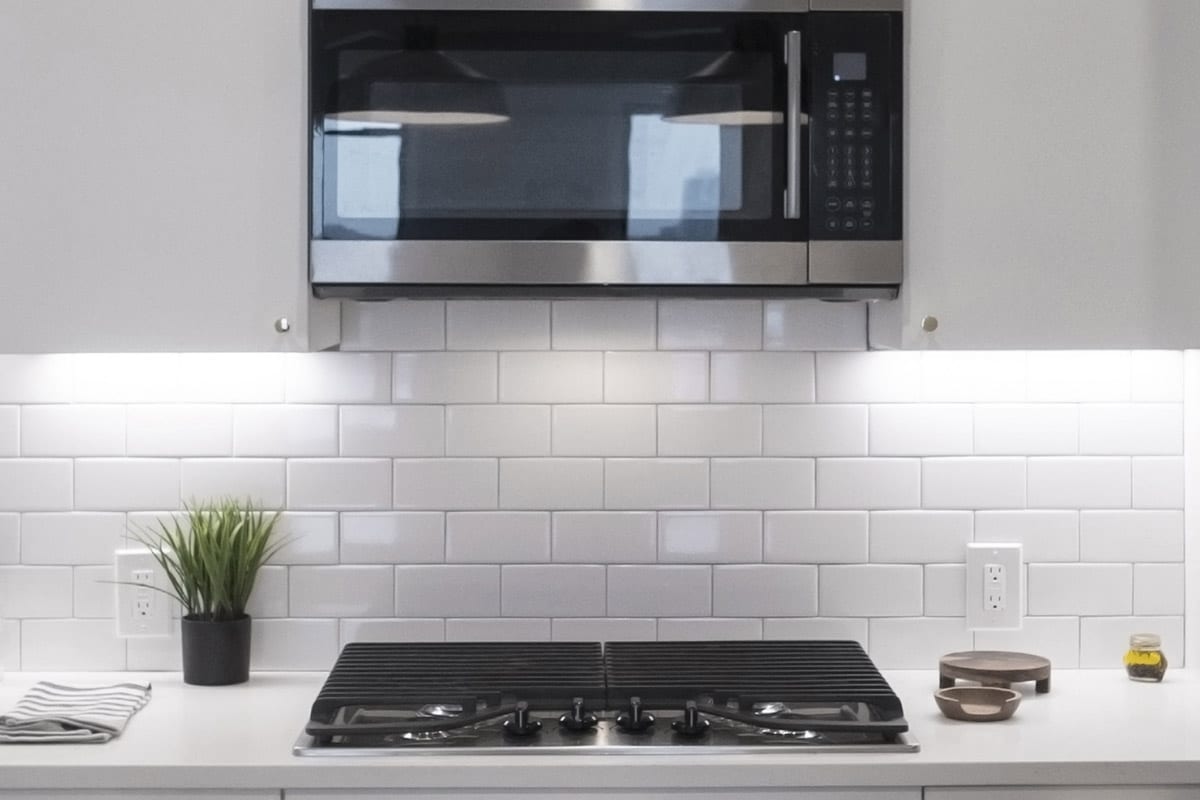 Whether you prefer a sleek and modern look or a more traditional style, there are
splashback
options to suit every taste. From glass and stainless steel to tiles and laminate, you can choose the material that best fits your design aesthetic. In addition, many
splashbacks
can be cut to fit any size or shape, making them a versatile choice for any kitchen layout.
In conclusion, a
splashback
is an essential element in any kitchen design, especially behind the sink. Not only does it enhance the overall look of your kitchen, but it also provides practical benefits such as protecting your walls and easy maintenance. With customizable options and a wide range of materials to choose from, adding a
splashback
is a simple and effective way to elevate your kitchen design. So, if you're considering a kitchen renovation or simply looking to upgrade your space, don't forget to include a
splashback
for your kitchen sink.
Whether you prefer a sleek and modern look or a more traditional style, there are
splashback
options to suit every taste. From glass and stainless steel to tiles and laminate, you can choose the material that best fits your design aesthetic. In addition, many
splashbacks
can be cut to fit any size or shape, making them a versatile choice for any kitchen layout.
In conclusion, a
splashback
is an essential element in any kitchen design, especially behind the sink. Not only does it enhance the overall look of your kitchen, but it also provides practical benefits such as protecting your walls and easy maintenance. With customizable options and a wide range of materials to choose from, adding a
splashback
is a simple and effective way to elevate your kitchen design. So, if you're considering a kitchen renovation or simply looking to upgrade your space, don't forget to include a
splashback
for your kitchen sink.






